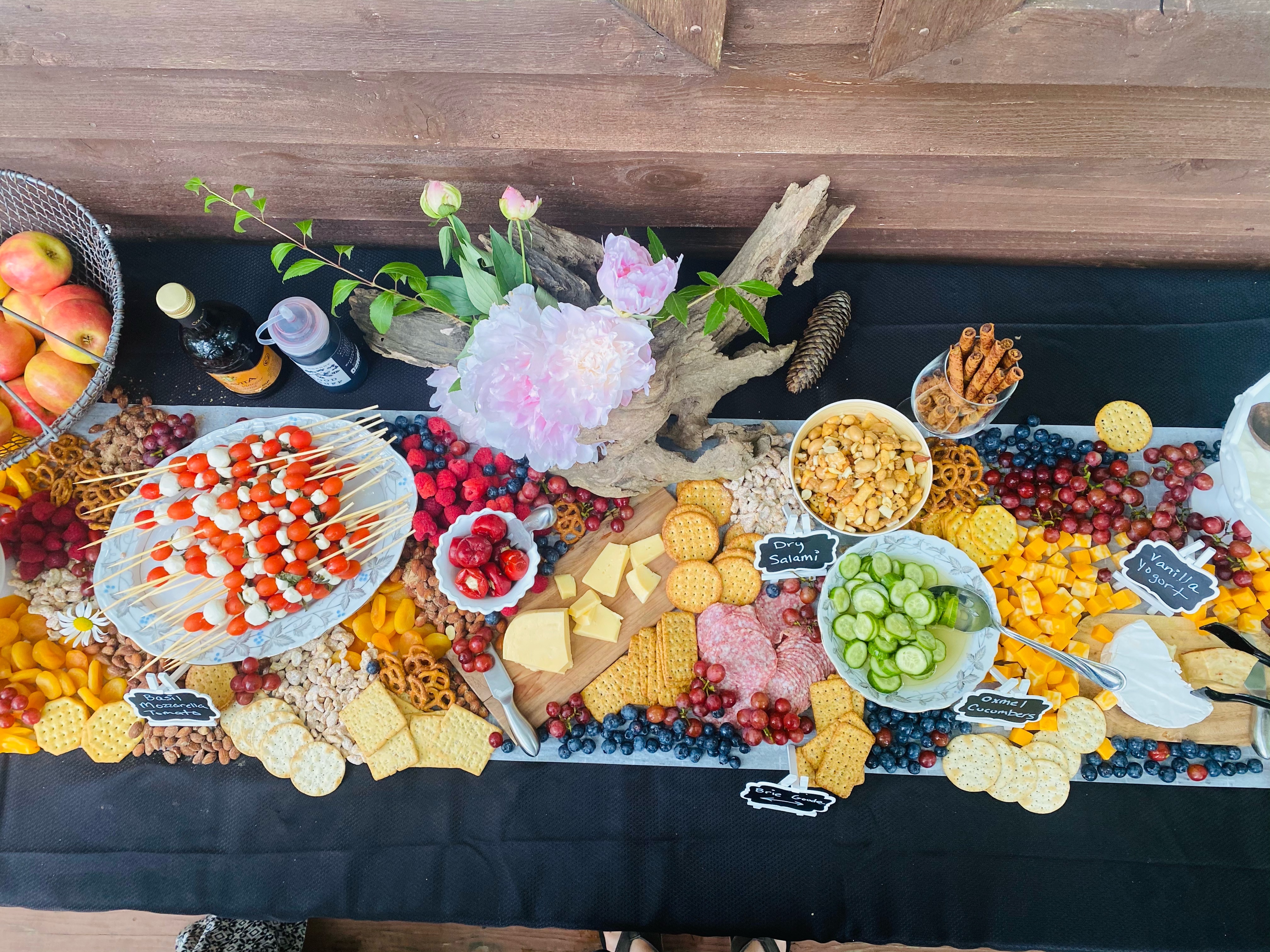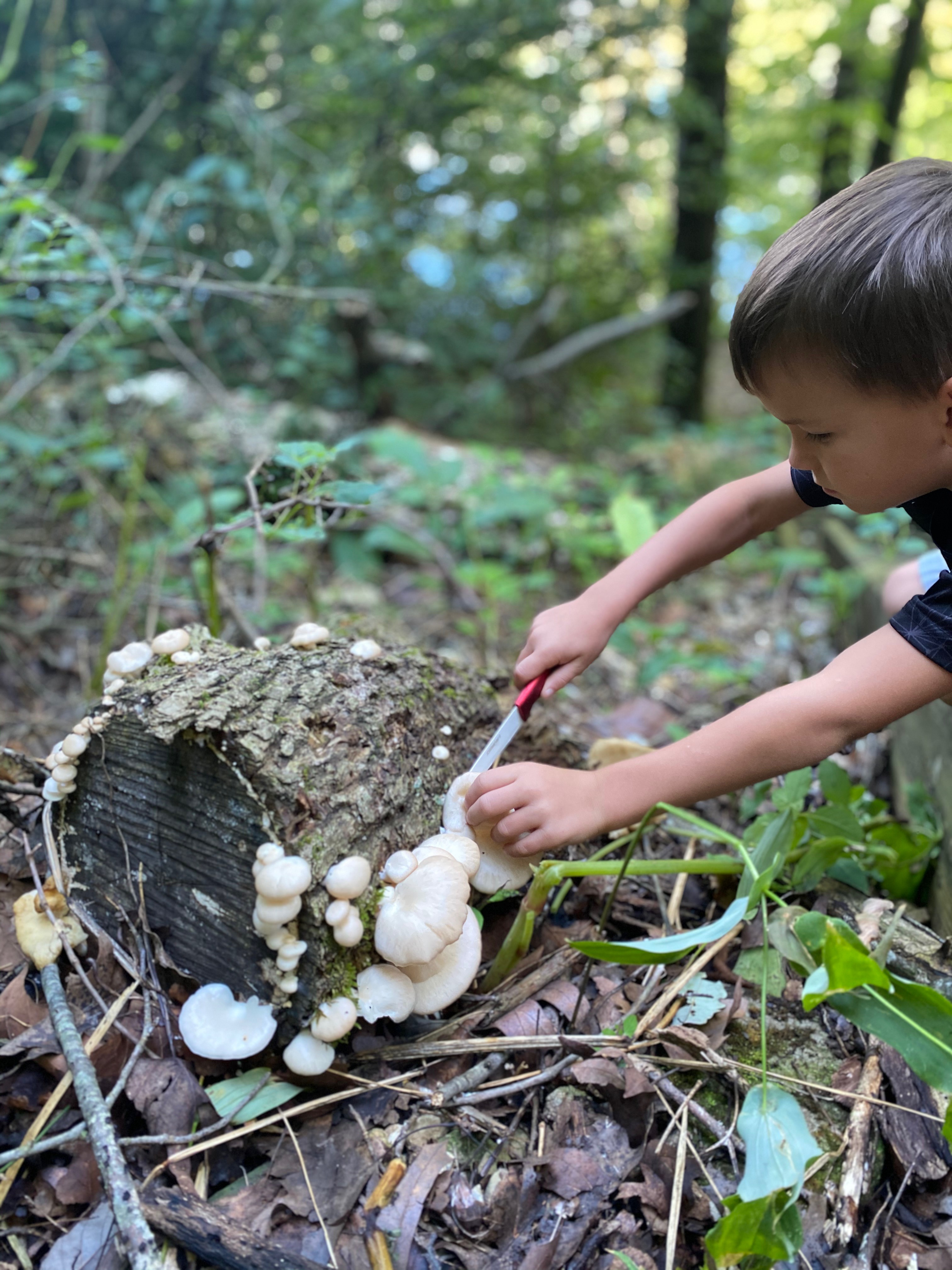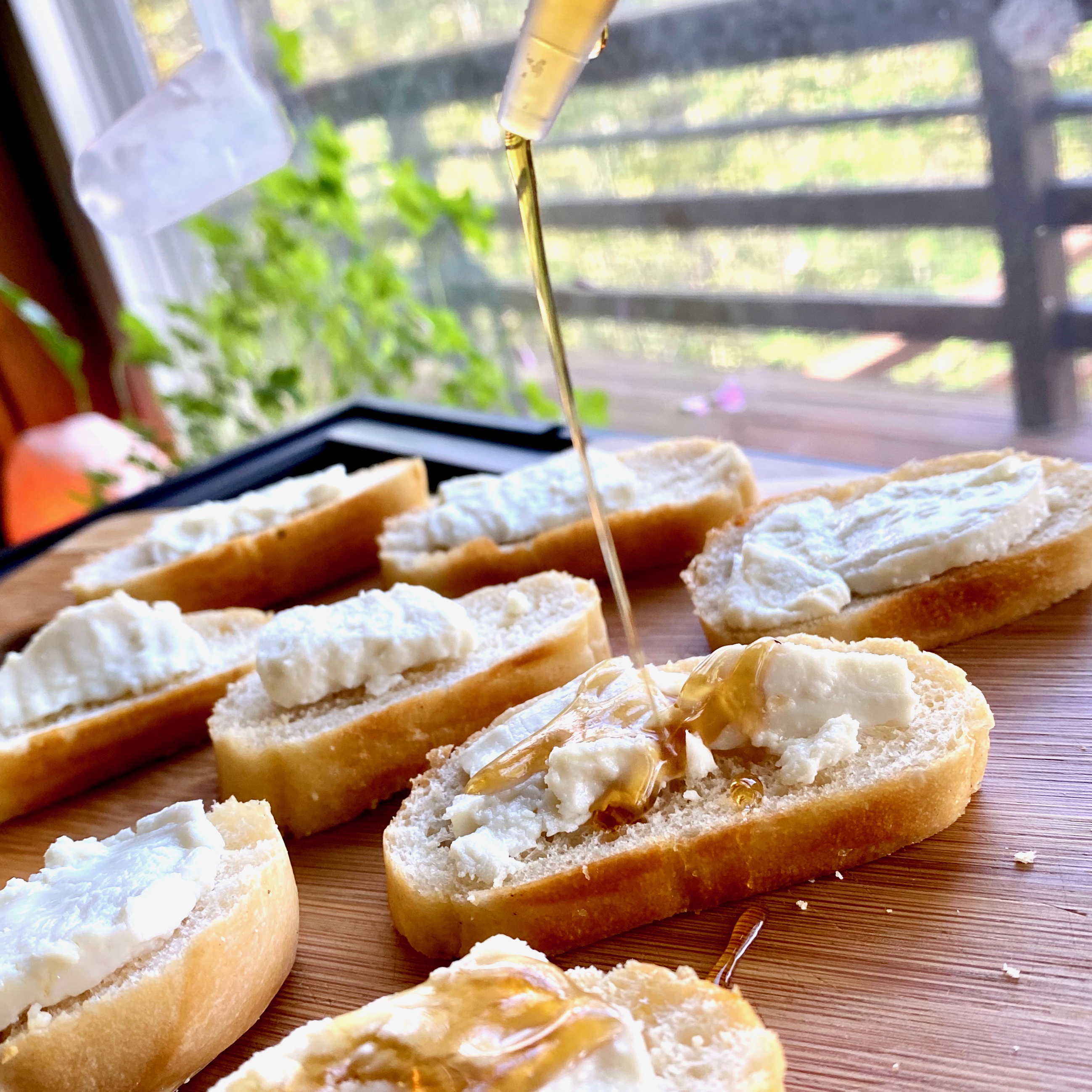Some people look at invasive species and see a nuisance.
Rachael West sees food.
Once part of the corporate world, West has departed from her white-collar job to host her increasingly popular gourmet meals from weeds, roots and mushrooms foraged from the wild.
“My goal is education,” West said.
She now owns Eating the Ozarks, a multifaceted business dedicated to wild food education. She hosts multi-course foraged dinners in a yurt — a round, tent-like structure — in Reeds Spring.
Dinner menu items might include sweet and tart, dark violet elderberry lemonade, soft white homemade bread with fresh whipped butter blended with wild oregano; creamy and earthy chanterelle soup; chicken skewers with spicebush; and dandelion root tiramisu— one of her signature dishes.
West leads people on primitive skills camping trips where they harvest pawpaw, chicken of the woods, and learn how to eat like their forefathers. Campers feast on a charcuterie breakfast and a five-course foraged dinner in the wilderness.
West writes grants. She caters weddings, works with farmers and has her own line of wild organic vinegar/syrup. She just finished a book manuscript.
And that is just the beginning.
From pencil skirts to yurts

Twelve years ago, West was an executive secretary to a vice president of an oil and gas company. She wore pencil skirts and high heels.
The Texas native moved to the Ozarks 10 years ago with the man who is now her ex-husband. He was attending Ozarks Technical Community College.
She got pregnant.
“I was not planning on having kids. I was planning my next international vacation. I ended up laid off and the old-time story of being barefoot and pregnant, and here I am in the Ozarks. I was like, ‘How does this happen?’ I had always been a career woman making good money,” West said.
After her daughter was born, they bought land in Fordland. West was pregnant again, this time with a boy.
She was “boohooing” and went for a stroll on her land. She discovered St. John’s wort and leaned into an interest from her early 20s. When she was younger, West attended a wild-infused tea and herb pairing dinner at a winery in California. Next, she took a class on making salves. Then, she studied herbalism.
“I had been paying $15 for (St. John’s wort), and I have a bushel of it. I got out my old papers and did a walk around my property. I found 40 plants in a week,” West said.
She became obsessed with discovering wild edibles in the Ozarks. She checked out 15 to 20 library books a week, kept a massive journal and wrote down every plant she could find. She amassed hundreds of entries.
“Rachael has an encyclopedic mind, a photographic memory. We noticed that working with her. She is a freak in that way,” said Maile Auterson, founder and director of Springfield Community Gardens. “She is an expert forager.”
A hobby gets serious

West wanted to share her knowledge and began teaching classes to 4-H clubs, homeschooled kids, and then offered workshops at Springfield Community Gardens.
Springfield Community Gardens was founded in 2010 and works to build a network of community gardens. With 17 gardens in Greene County, the goal is to create access to healthy, local food, improve neighborhoods and educate people about gardening.
Auterson was impressed with West immediately.
“She has killer skills. Nature is deep in her bones in a way that it is not for most people. She understands the topography of the Ozarks. We have great respect for agriculture, the land, the environment,” Auterson said.
West is on a mission to connect people with the land, with their food. And she’s also a big advocate of eating invasive species as a way to eradicate them.
Take, for example, burdock, a plant native to Japan. You can buy it in an Asian market in Springfield, but you can hunt for it, too.
“It is kind of like carrot and fennel had a baby,” said West. “You can use in stir-fry. Can shred it and use it like carrot salad or in crab cakes. It is very versatile. It would be invasive here but free food if the right person was to see it growing in the backyard. If I could teach people to eat burdock, we wouldn’t have a problem.”
West’s workshops were so popular she was eventually hired to become the food hub manager. In that role, she continued wild food education but also applied for grants and worked with farmers to help them apply for the right USDA loan.
“She can figure out what grants fits best. She has been really good at helping our farmers get USDA loans,” said Auterson.
West and Auterson applied for a received two grants to buy a commercial dehydrator and freeze dyer. Springfield Community Gardens has a commercial kitchen at Cox North.
West’s first wild edible dinner was in partnership with the gardens and Lindberg’s Tavern. Then, she hosted one at the Springfield Art Museum, and it only snowballed from there.
Yurt dinners gain popularity

During her journey to educate people about wild food, West received a call from Amanda Francis, who owns the Forest Garden Yurts.
The yurts have been a staple in Reeds Spring since the mid-70s. Tom Hess, a well-known potter, and his wife Lory Brown lived and worked in the yurts for more than 40 years. The yurts were designed by renowned yurt architect William Copperthwaite.
Copperthwaite was a Maine native and Harvard graduate. According to Francis, the Hess yurts were designed as a workshop class led by Copperthwaite.
There are two yurts on the property: one was the Hess studio and the other their home. The studio was open to the public, and people would stop by and watch him create pottery. This large, open-air structure is where the yurt dinners are held. The other yurt is now a popular Airbnb.
“I had recently purchased the yurts and was looking for something that would attract a small crowd,” Francis said, explaining how the dinners started.
Francis’ friend knew Bo Brown, author of Foraging the Ozarks. He knew West. They wanted to have a dinner and book signing at the yurt, and so West was asked to come and cater the wild dinner in fall 2020.
That led to another dinner. And another, which quickly sold out.
“I think people latch on to Rachael because her passion just shines through. She is the best at what she does,” Francis said.
This year, they are increasing capacity to 40 people per dinner because the demand is so strong. There are three dinners in fall and spring (six total).
The dinners vary each time and are dictated by what is in season. West prepares the meals with foraged and locally produced ingredients.
“She pushes people out of their comfort zone, but not too much. They don’t know what to expect, and Rachael totally takes all the wild foraged and makes it a culinary experience,” Francis said.
The yurt dinners have led to a great partnership and friendship between Francis and West. Now the women are trying to imagine how far they can take these dinners. A forest. An open field. Perhaps even a cave — these are plans in the works.
How to attend?
Check out Eating the Ozarks events on West's Facebook page. Events are planned for April, May and June.
Packaged foods in the works
West loves to explore the outdoors and started dehydrating food for her family to take on hikes. That is when it occurred to her to create “Pack Meals.” She would invent the recipe, dehydrate the food, which would be useful for backpackers who could rehydrate it. Using TOMS Shoes as a business model, for every “pack meal” sold, she’d donate one to the unsheltered community or to school backpack programs.
West contacted Auterson with her idea. They are working together to create the pack meals.
West is using the commercial kitchen at Cox North.
“I am hoping as we grow the pack meals, we will be able to divert food waste,” said West.
The product is still in development and not available yet.
West has her own line of vinegar/syrup including Elderberry Good Stuff available online, at select stores and the yurt dinners.
Origin of Eating the Ozarks
Eating the Ozarks started as Once Upon a Weed in 2013. West would walk people around her property in Fordland and teach them about wild edibles. She kept a Facebook page where she posted her classes and discoveries.
The public was hungry for her knowledge, and demand kept growing.
West eventually divorced. As a single mom, she moved to a cabin on the Niangua which is where she hosts foraging classes. She is working on converting part of her property into a forest farm with wild, native and indigenous historically grown food.
West eventually renamed the business Eating the Ozarks to reflect her growing business. People that own their own land can hire her to lead them through their property to discover wild edibles.
She also hosts pairing dinners with Springfield Brewing Co., and there’s always something new in the works.
Her culinary events have become so popular she left the Springfield Community Gardens as a full-time employee in April 2021, but still is a contractor.
Self-employed, West has written a book about wild edibles and their nutritional value and is looking for an editor or may self-publish.
The single mom does all of this while homeschooling her two children.
West wound up in the Ozarks unexpectedly, but she has impressed many people since moving here. People like Auterson whose family are multi-generation farmers in the Ozarks.
“My dad taught me to eat out of the fields,” said Auterson. “But I’ve learned a lot from Rachael.”

